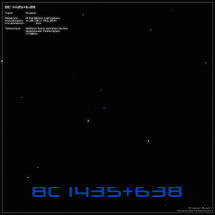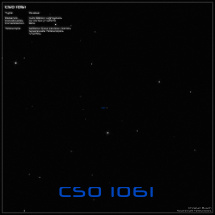
A quasar (QSO) is the active nucleus of a galaxy, which, like a star in visible light, appears almost point-like and emits immensely large amounts of energy.
The first quasar was discovered in 1963 - it bears the designation "3C273" and is located in the constellation Virgo at a distance of 2.4 billion light years.
To explain the immensely high luminosities of quasars, a supermassive black hole (SMBH) with many billions of solar masses is needed in the center of
the host galaxy. When matter falls towards the core, it cannot fall directly into the black hole because of the necessary conservation of angular momentum.
Instead, it forms a flat, rotating disk - the so-called "accretion disk". This disk can reach a diameter of several hundred light-years in the brightest quasars
and is often surrounded by a very dense torus of dust.
Due to frictional effects, the accreted matter in the innermost regions of the disk heats up to several million Kelvin and up to 30% of the mass is converted
into energy. The accretion disk glows brightly in a wide range of the spectrum and can reach a luminosity of up to 100 trillion suns. Therefore, quasars can
be easily seen even at a distance of more than 12 billion light-years. The most distant quasars known so far have a redshift of z=7.1.
Some QSOs have jets, which are caused by magnetic fields and can accelerate particles to almost the speed of light.






















